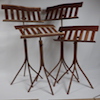I've been working with some SYP 2x12's from home depot for a project, and can tell they are very moist. I wasn't expecting them to be dry, but damn. These are practically bleeding in spots. I jointed the edges with my table saw jig without issue. I then trimmed off a 2ft piece to rip down. When I went to start ripping 4" wide sections, the board started binding a few inches into the cut. I pulled back a bit, then pressed forward, and the board came to a complete stop another couple inches in. The blade was spinning fairly easily with only minor contact with the board at this point, but it felt like the board was bolted to the table and wouldn't move in any direction at all.
So I stopped the saw, and it took quite a bit of muscle to pry it off the table. It definitely was pinching the blade. I lowered the blade to about 3/4" and made a partial depth cut which went smoothly. Then raised the blade to just over 1" to make another cut, and halfway through, more binding. I pushed through it just a bit and then POP. The board violently cracked nearly the full length of the board right around where the cut was.
I checked my fence, and it is perfectly aligned with the blade, if not a few thou wide at the far end, no problem there. Is this just due to the moisture content and stresses in the wood? Its pretty obvious now that the wood is pushing itself together around the part that I cut, which is where the pinching occurred. This is not the first board of SYP that has binded up on me, I think I just need to say goodbye to this wood and get some better lumber....




 Reply With Quote
Reply With Quote





